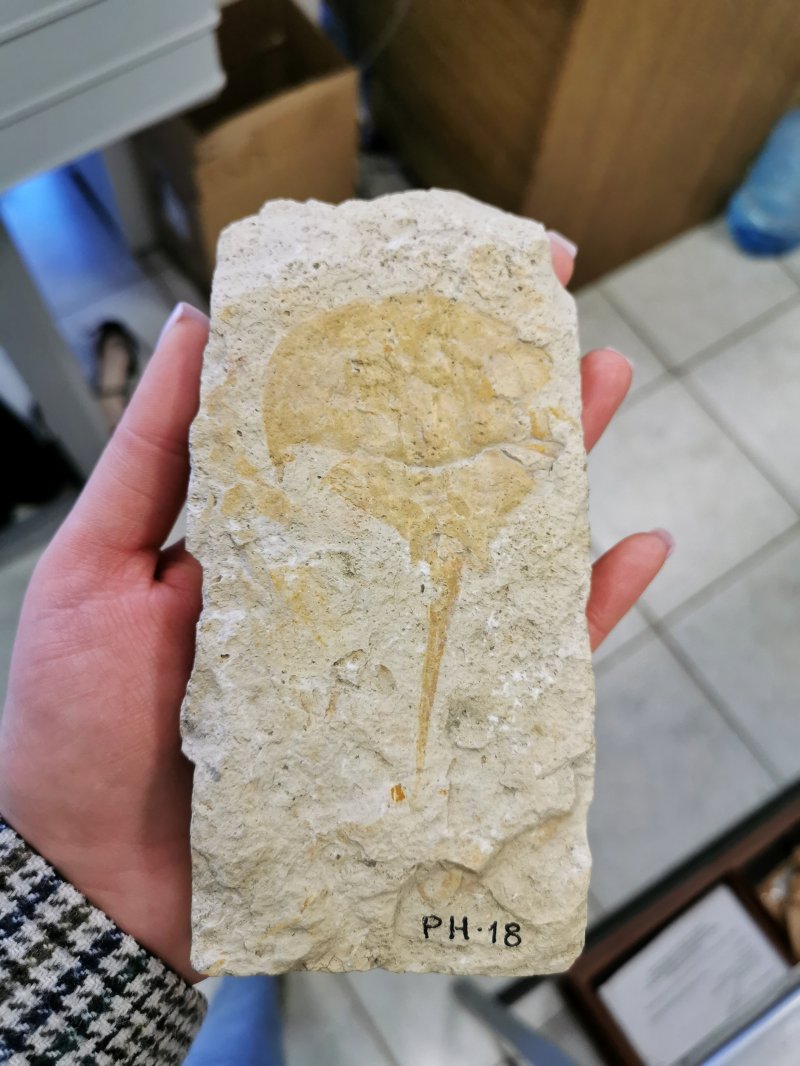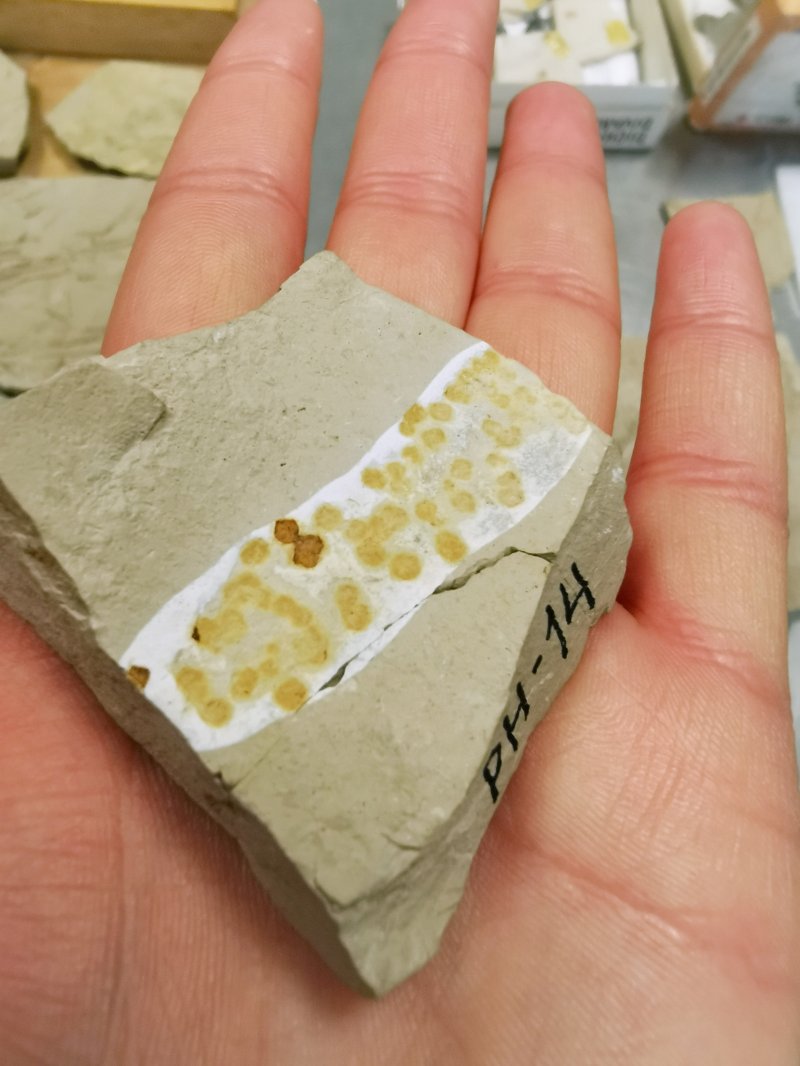22 March 2022
New arrivals in the collection - prints of ancient xiphosura
Recently,
the museum collection has received something interesting. It is an imprint of
the shell of ancient xiphosura aged 250 million years. It was found in the Perm
Region in 2017. You can see the contour of a horse-hoofed dorsal shield and a
long, sharp tail spike. This imprint is unique because it became the holotype
of the new species Paleolimulus kunguricus Naugolnykh. The specimen was presented
to the Darwin Museum by our friend, the paleobotanist, the professor of the
Russian Academy of Sciences and the Doctor of Geological Sciences Sergey
Naugolnykh.

And these
numerous circles are the prints of the xiphosurans at the earliest stages of
development. Xiphosurans grow rather slowly, reaching puberty only by the tenth
year of life. This unique find was made at the bus stop (!) of the village of Staraya
Filippovka, near Kungur.

Xiphosura
is one of the most ancient creatures on Earth. This species survived dinosaurs,
volcanic eruptions, impacts of meteorites and great glaciations, and changed
little in appearance. They are classified as a separate order of arthropods.
You can meet xiphosurans off the coast of North America, the Far East of Russia
and Southeast Asia.
Every
decent xiphosura is armed with a strong dorsal shield - a carapace, and a long
spike at the end of the body, with the help of which it burrows into the sand
in case of danger. On the huge and thick shield of the creature there are 4
almost blind eyes, and under the shield there are chelicerae and 5 pairs of
walking legs. It is not pretentious in tastes: xiphosura feeds on mollusks and
worms. It breathes with gills located on its legs, but can survive solely on
land for up to 4 days. It floats upside down, moving its legs.
Комментарии могут оставлять только зарегистрированные пользователи









